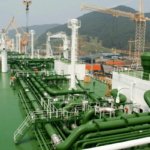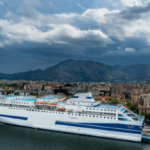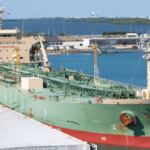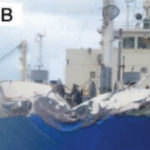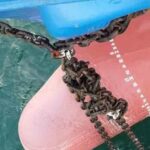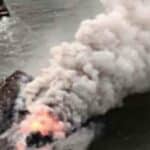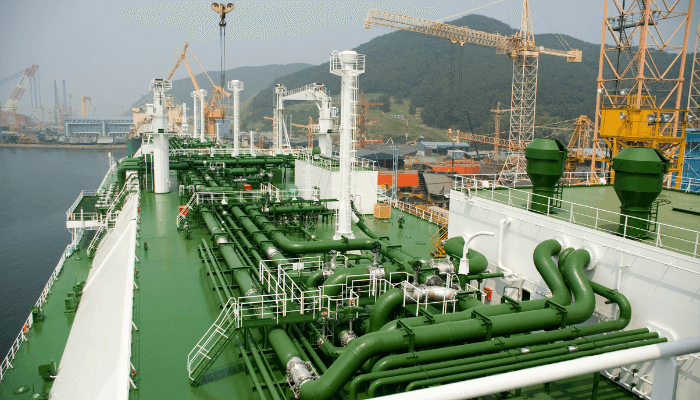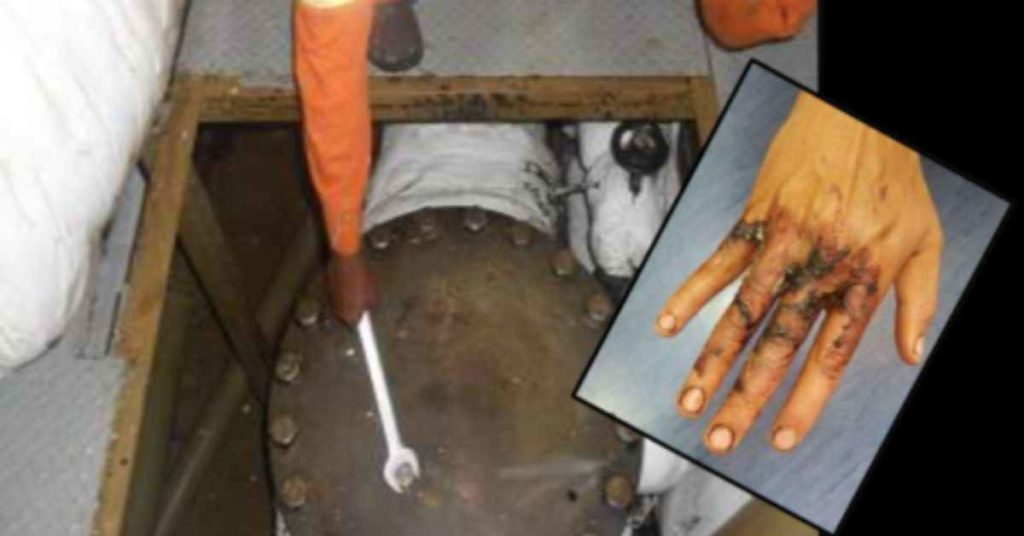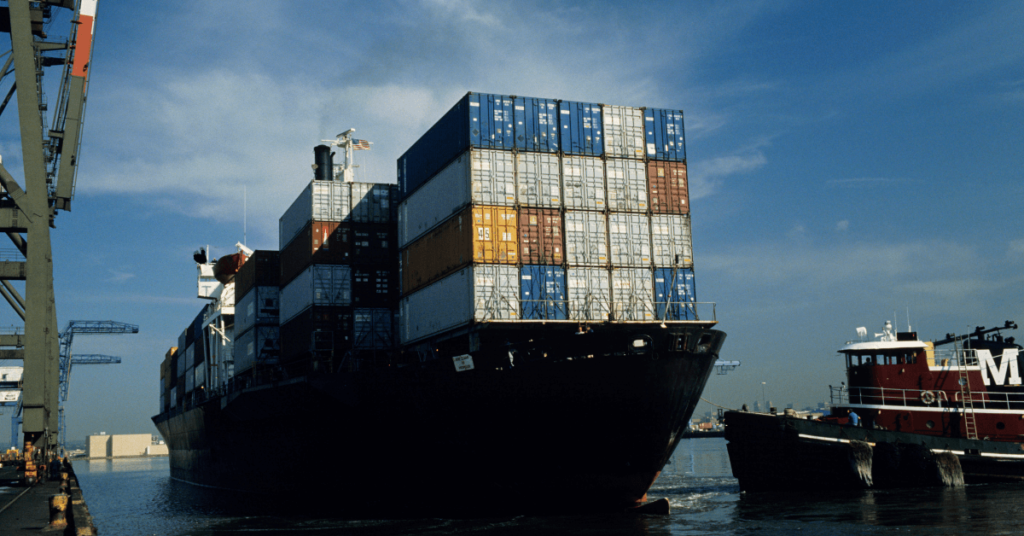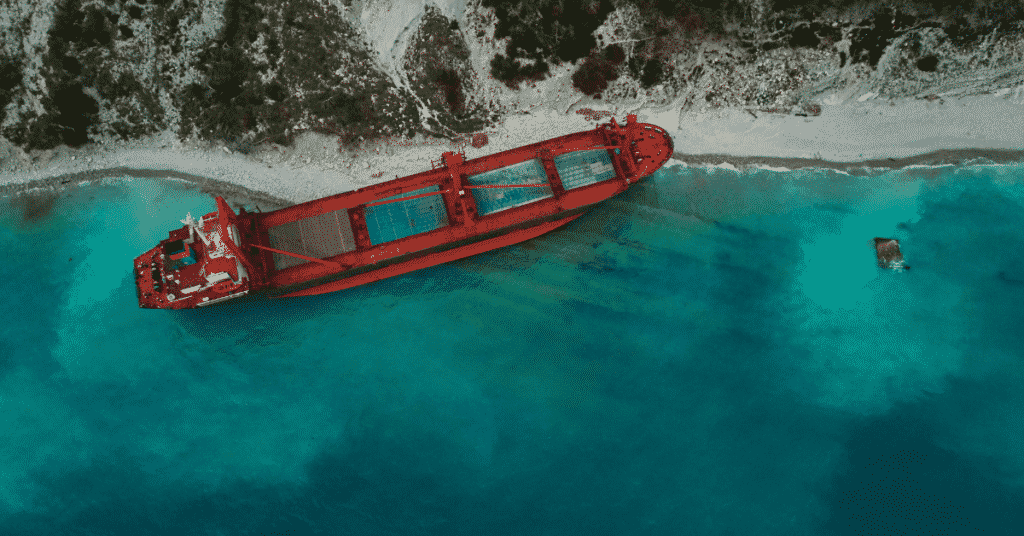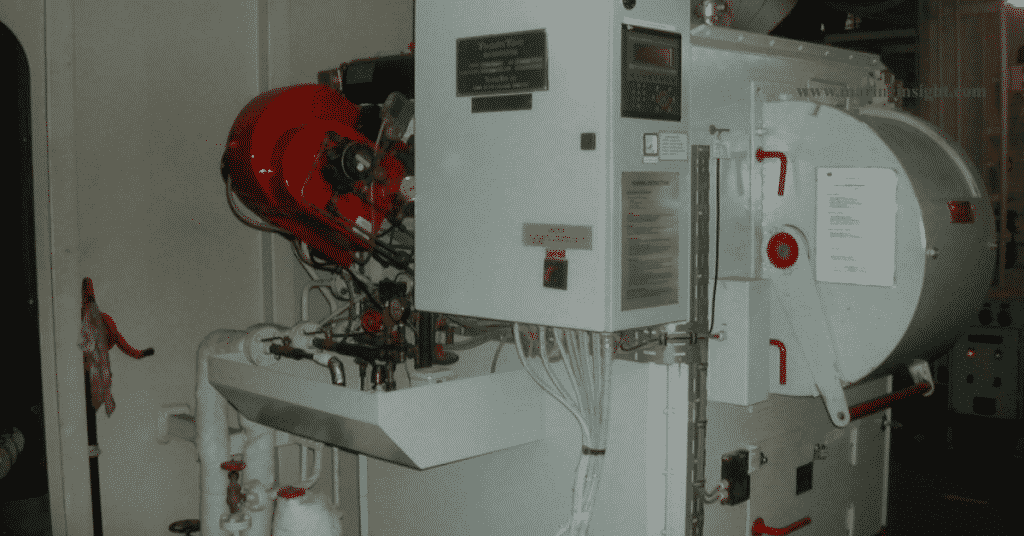Case Study: Incorrectly Installed Section Of Engine Causes Fire Aboard Containership
An incorrectly installed section of main engine fuel oil return tubing led to an engine room fire aboard a containership off the coast of Santa Barbara, California, the National Transportation Safety Board said Tuesday.
Marine Investigation Report 22/15 details the NTSB’s investigation of April 28, 2021, a fire aboard the containership President Eisenhower while transiting through the Santa Barbara Channel. The vessel was transiting to Oakland, California with a crew of 22. The crew extinguished the fire using the engine room’s fixed carbon dioxide fire-extinguishing system.
As a result of the fire, the vessel lost propulsion and drifted for several hours before being towed to the Port of Los Angeles. No pollution or injuries were reported. Damage to the vessel totalled an estimated $8.22 million.
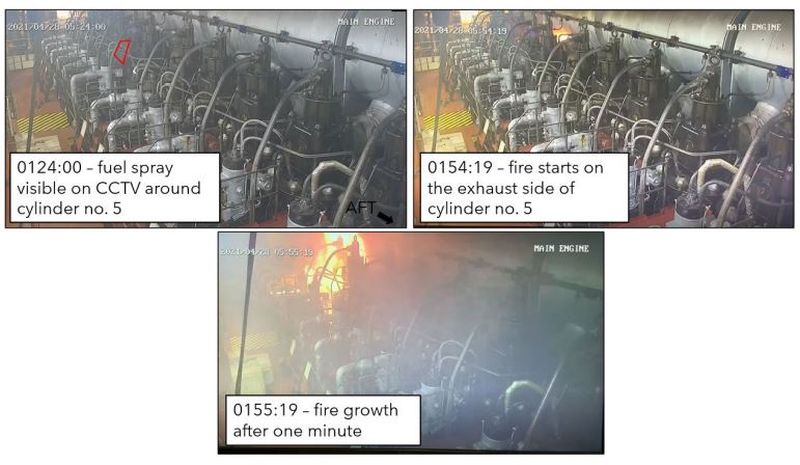
A crewmember on watch noticed smoke coming from an open engine room hatch early in the morning on April 28. Two crewmembers donned firefighter outfits and attempted to use portable fire extinguishers to quell the fire. Realizing the fire was “too much,” the captain decided to release carbon dioxide into the engine room.
The day before the vessel’s departure, the second engineer installed a new section of steel fuel oil return tubing for the main engine. A post fire examination showed that a compression fitting on the end of the newly installed section of fuel return tubing had disconnected, causing the ultra-low sulfur diesel fuel oil the engine was burning to spray. CCTV footage from the vessel showed diesel oil spray about 30 minutes before the fire started. Within one minute after the fire started, cardboard and wooden boxes of spare parts, which were stored one deck above the main engine and next to the auxiliary boiler, caught on fire.
Investigators found that an unshielded and uninsulated exhaust valve compensator flange acted as an ignition source for the spraying diesel fuel. An examination of the disconnected fuel oil return tubing and failed compression fitting revealed that the compression fitting’s sealing ferrule was not sufficiently swaged to the steel tubing.
The NTSB determined the probable cause of the engine room fire aboard the containership President Eisenhower was a crewmember insufficiently swaging a compression fitting ferrule during the installation of fuel oil return tubing for a main engine’s cylinder, allowing an end of the tubing to disconnect and spray fuel oil onto a nearby unshielded and uninsulated cylinder exhaust component.
NTSB identified two lessons learned from this investigation:
1. Rapid oil leak detection systems are a valuable tool that can be used to prevent fire in machinery spaces. Video analytic technology is designed to use standard CCTV video to detect fuel mist and spray in real time and alert the crew before any ignition and fire.
2. The crew of the President Eisenhower effectively contained the spread of a main engine room fire by removing fuel and oxygen sources, cooling boundaries, and communicating effectively. This shows the importance of realistic scenario-based training, including engine room emergencies, which involve shutting down machinery, fuel oil, lube oil, and ventilation systems, as well as boundary monitoring, to quickly contain and suppress engine room fires, which can spread to other spaces and/or cause a loss of propulsion and electrical power.
Marine Investigation Report 22/15 is available online.
Reference: ntsb.gov
Do you have info to share with us ? Suggest a correction
About Author
Marine Insight News Network is a premier source for up-to-date, comprehensive, and insightful coverage of the maritime industry. Dedicated to offering the latest news, trends, and analyses in shipping, marine technology, regulations, and global maritime affairs, Marine Insight News Network prides itself on delivering accurate, engaging, and relevant information.

About Author
Marine Insight News Network is a premier source for up-to-date, comprehensive, and insightful coverage of the maritime industry. Dedicated to offering the latest news, trends, and analyses in shipping, marine technology, regulations, and global maritime affairs, Marine Insight News Network prides itself on delivering accurate, engaging, and relevant information.
- Real Life Incident: Vessel Collision in Good Visibility
- Real Life Incident: Severe Injury To Deck Crew While Leaving Berth
- Real Life Incident: Departure Damage in Very Restricted Waterway
- Real Life Incident: Low Situational Awareness Has High Impact Consequence
- Real Life Incident: Fouled Anchor in a Designated Anchorage
- Real Life Incident: Fire On Barge Carrying Scrap Metal Causes $7 Million Worth Of Damage
Latest Case studies Articles You Would Like:
Subscribe To Our Newsletters
By subscribing, you agree to our Privacy Policy and may receive occasional deal communications; you can unsubscribe anytime.




